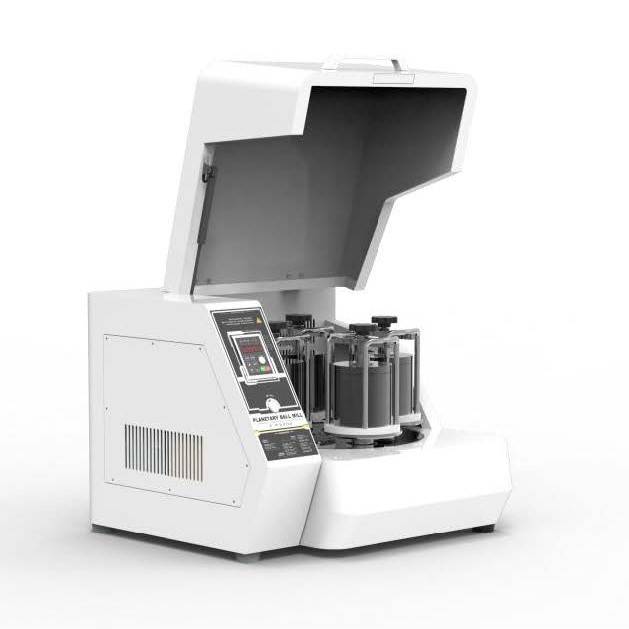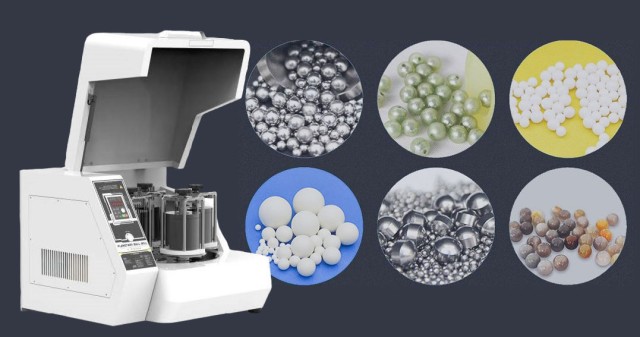Introduction to X-ray Fluorescence Spectrometry
Importance of Sample Preparation
The standard sample must closely mimic the chemical composition and physical structure of the analytical sample. This ensures that any variation in the sample preparation process does not introduce bias into the analysis. For instance, proper grinding and pressing techniques can significantly reduce heterogeneity and minimize variability, thereby enhancing the representativeness of the sample.
Moreover, meticulous sample preparation is crucial for eliminating interference from impurities and contaminants, which can otherwise skew the results. By following strict protocols, such as using the right mill for specific applications and adhering to safety guidelines, analysts can ensure that their samples are prepared consistently. This not only boosts the reliability of the analysis but also increases its sensitivity, allowing for the detection of trace levels of analytes that might otherwise go unnoticed.
In the context of X-ray fluorescence (XRF) spectrometry, good sample preparation is non-negotiable. Whether dealing with loose powders, fused beads, solid samples, or liquids, finding the right approach to sample preparation is paramount. It is the first, and arguably the most critical, step in achieving accurate and reproducible results. Unlike other analytical techniques that may require extensive sample preparation, XRF benefits from straightforward, fast, and inexpensive methods that are easy to learn and can be automated, freeing up laboratory resources for other tasks.

Purpose of Sample Preparation
The primary objective of sample preparation in X-ray fluorescence spectroscopy is to transform the original specimen into a form that is both analytically suitable and representative. This involves several key steps and considerations to ensure the sample meets the necessary criteria for accurate and reliable analysis.
Firstly, the sample must undergo processing to achieve a uniform distribution of components. This uniformity is crucial as it ensures that the analysis reflects the true composition of the sample, minimizing the risk of skewed results due to localized variations.
Secondly, the surface of the sample must be flat. A flat surface is essential for consistent and accurate measurement by the X-ray fluorescence spectrometer. Any irregularities can lead to discrepancies in the data collected, thereby compromising the integrity of the analysis.
Thirdly, the sample must possess overall representativeness. This means that the prepared sample should be a true and unbiased representation of the original material. Any bias introduced during the preparation process can lead to inaccurate conclusions about the sample's composition.
Additionally, the sample must meet specific specifications that are compatible with the analytical instrument. These specifications include the appropriate size and shape of the sample, as well as any necessary treatments to eliminate interferences such as impurities or contaminants.
Finally, the prepared sample should be in a state that allows it to be directly fed into the instrument for measurement. This seamless transition from preparation to analysis is vital for maintaining the efficiency and accuracy of the analytical process.
In summary, the purpose of sample preparation in X-ray fluorescence spectroscopy is to create a sample that is uniform, flat, representative, and suitable for direct measurement, ensuring the reliability and accuracy of the analytical results.
Sample Preparation Methods
Powder Tableting Overview
Powder tableting is a prevalent sample preparation method in X-ray fluorescence spectrometry, designed to transform raw samples into uniform, stable discs suitable for analysis. The process begins with the crushing and drying of the sample to remove any moisture and reduce it to manageable fragments. This initial step is crucial as it ensures that the sample is in a state where further processing can be effectively conducted.
Next, the crushed sample is subjected to grinding using specialized devices such as vibration mills or planetary grinders. These tools are essential for achieving a consistent particle size, which is a critical factor in the accuracy of the subsequent X-ray fluorescence analysis. The grinding process not only homogenizes the sample but also facilitates better compaction during the pressing stage.
Finally, the ground sample is pressed into a stable disc using a tablet press. This equipment can be either automatic or manual, with automatic presses being more commonly used due to their ability to preset pressure and holding times, ensuring repeatability and consistency. The pressing step is vital as it forms a flat, dense disc that is ideal for X-ray fluorescence measurements, providing a uniform surface for the X-rays to interact with.
This method of sample preparation is widely applicable across various materials, including minerals, ores, rocks, slag, cement, ceramics, glass, metal filings, and more. By following these steps, analysts can ensure that their samples are prepared in a manner that maximizes the reliability and accuracy of the X-ray fluorescence results.

Grinding of Samples
The grinding process is a critical step in preparing samples for X-ray fluorescence spectrometry. Typically, a small piece of sample that has been initially crushed by a jaw crusher is further processed to achieve a suitable particle size using a vibration grinder. This step is essential to minimize particle size effects and ensure uniformity, which is crucial for accurate analysis.
Common grinding equipment includes vibration mills and planetary grinders. Vibration mills are designed to handle various sample sizes, typically ranging from 300g to 10g, and can process multiple samples simultaneously, making them efficient for batch processing. Planetary grinders, on the other hand, offer precise control over the grinding process, making them ideal for industries requiring high precision and reproducibility.

For materials that are too soft or malleable to be effectively ground, alternative methods such as cutting or using a knife mill may be necessary to achieve a homogeneous, fine-grained condition. This ensures that the sample is in a form suitable for subsequent processing steps like pressing or fusion.
| Grinding Equipment | Sample Size Range | Number of Samples | Suitable Industries |
|---|---|---|---|
| Vibration Mills | 300g to 10g | 1 to 3 samples | General, Batch Processing |
| Planetary Grinders | Variable | Single sample | High Precision, Reproducibility |
In summary, the choice of grinding equipment depends on the specific requirements of the sample and the industry standards. Whether using vibration mills for bulk processing or planetary grinders for precision, the goal remains the same: to achieve a fine, uniform powder that is ready for the next stage of sample preparation.

Sample Pressing
The ground sample is transformed into a form suitable for analysis using a tablet press. These presses are categorized into automatic and manual models, with automatic presses being more prevalent due to their ability to precisely control pressure and holding time through pre-set parameters.
Automatic tablet presses offer several advantages, including consistency and efficiency, which are crucial for maintaining the repeatability of the sample preparation process. This consistency ensures that each sample disc produced has a uniform density and thickness, which is essential for accurate X-ray fluorescence spectrometry.
In contrast, manual tablet presses require more operator intervention and are generally less reliable in terms of pressure and holding time consistency. However, they can be useful in specific scenarios where manual control is advantageous, such as in small-scale or specialized laboratories.
The choice between automatic and manual presses often depends on the scale of operations, the required precision, and the availability of resources. Regardless of the type of press used, the ultimate goal is to create a sample disc that meets the stringent requirements for analysis in X-ray fluorescence spectrometry.
Scope of Application
X-ray fluorescence spectrometry (XRF) through the powder tableting method is versatile, catering to a broad spectrum of materials. This technique is particularly effective for inorganic materials such as common minerals, ores, rocks, slag, cement, ceramics, and glass. These materials often require precise analysis to determine their elemental composition, and the powder tableting method provides a reliable means to prepare these samples for accurate XRF analysis.
In addition to inorganic materials, the method also applies to various metal-based samples. This includes metal filings, cuttings, drilling cuttings, and turnings, which are common by-products in metalworking industries. The ability to analyze these materials is crucial for quality control and process optimization in manufacturing. Furthermore, metal oxides can also be effectively analyzed using this method, which is significant in industries like metallurgy and materials science.

The scope extends to environmental samples such as soil and water sediments, which are essential for environmental monitoring and pollution control. Additionally, ash from dried or freeze-dried organic matter and biological materials can be analyzed, making this method useful in fields like forensic science and environmental studies.
Another important application is the analysis of intermediate alloys and molten crushed materials. These materials are often used in the production of various industrial products and require detailed elemental analysis for quality assurance. The powder tableting method ensures that these materials are prepared in a manner that allows for accurate and reproducible XRF measurements.
Overall, the powder tableting method in XRF is a robust and flexible technique, capable of handling a diverse array of sample types, thereby supporting a wide range of analytical needs across different industries and scientific disciplines.
Summary and Considerations
Advantages of Powder Tableting
The powder tableting method offers several distinct advantages that make it a preferred choice for sample preparation in X-ray fluorescence spectrometry. One of the most notable benefits is its simplicity in operation. The process involves straightforward steps: crushing the sample, grinding it to a uniform particle size, and then pressing it into a stable disc. This ease of operation reduces the complexity and the potential for errors, making it accessible even to those with minimal technical expertise.
Moreover, powder tableting boasts a rapid sample preparation speed. Unlike more intricate methods that may require extensive time for homogenization or complex chemical treatments, powder tableting can quickly transform raw samples into a format suitable for analysis. This speed is particularly advantageous in laboratories where high throughput is essential, allowing for more efficient use of time and resources.
Another significant advantage is the low cost associated with this method. The equipment required for grinding and pressing is relatively inexpensive compared to other sophisticated sample preparation techniques. Additionally, the minimal use of consumables and the straightforward nature of the process contribute to its cost-effectiveness. This makes powder tableting an economical choice for both small and large-scale operations, ensuring that high-quality sample preparation is accessible without significant financial investment.

Challenges and Requirements
The fluorescence intensity of the elements within the sample is significantly influenced by both the particle size of the sample and the pressure applied during tableting. Ensuring the consistency of each step in the sample preparation process is paramount to achieving reliable analysis results. The powder tablet method, while preserving the chemical structure of the sample, is particularly susceptible to the mineral effect.
To mitigate these challenges, it is crucial to maintain uniform particle size distribution through meticulous grinding processes. This involves using advanced grinding equipment such as vibration mills and planetary grinders, which can homogenize the sample particles to a consistent size. Additionally, the pressure applied during tableting must be carefully controlled and standardized to avoid variability in fluorescence intensity.
Moreover, the mineralogical composition of the sample plays a critical role in the accuracy of X-ray fluorescence spectrometry results. The presence of different minerals can lead to variations in fluorescence intensity, necessitating a thorough understanding of the sample's mineralogical makeup. This understanding can guide the selection of appropriate grinding and tableting parameters to minimize discrepancies.
In summary, while the powder tablet method offers a straightforward and cost-effective approach to sample preparation, it demands meticulous attention to detail in grinding, tableting pressure, and mineralogical analysis to ensure consistent and accurate results.
Related Products
- XRF & KBR plastic ring lab Powder Pellet Pressing Mold for FTIR
- XRF & KBR steel ring lab Powder Pellet Pressing Mold for FTIR
- Automatic Laboratory Hydraulic Press for XRF & KBR Pellet Press
- XRF Boric Acid Lab Powder Pellet Pressing Mold for Laboratory Use
- XRD Sample Holder X-ray Diffractometer Powder Slide
Related Articles
- Operating of Automatic Lab xrf Pellet Press
- Automated laboratory XRF and KBR pellet press operating procedures
- Effective Preparation of Samples for XRF Analysis via Pressed Pellets Method
- A Comprehensive Guide on Pressing XRF Pellets Using a KinTek Automatic Hydraulic Press
- Guide for Xrf Pellet Press












